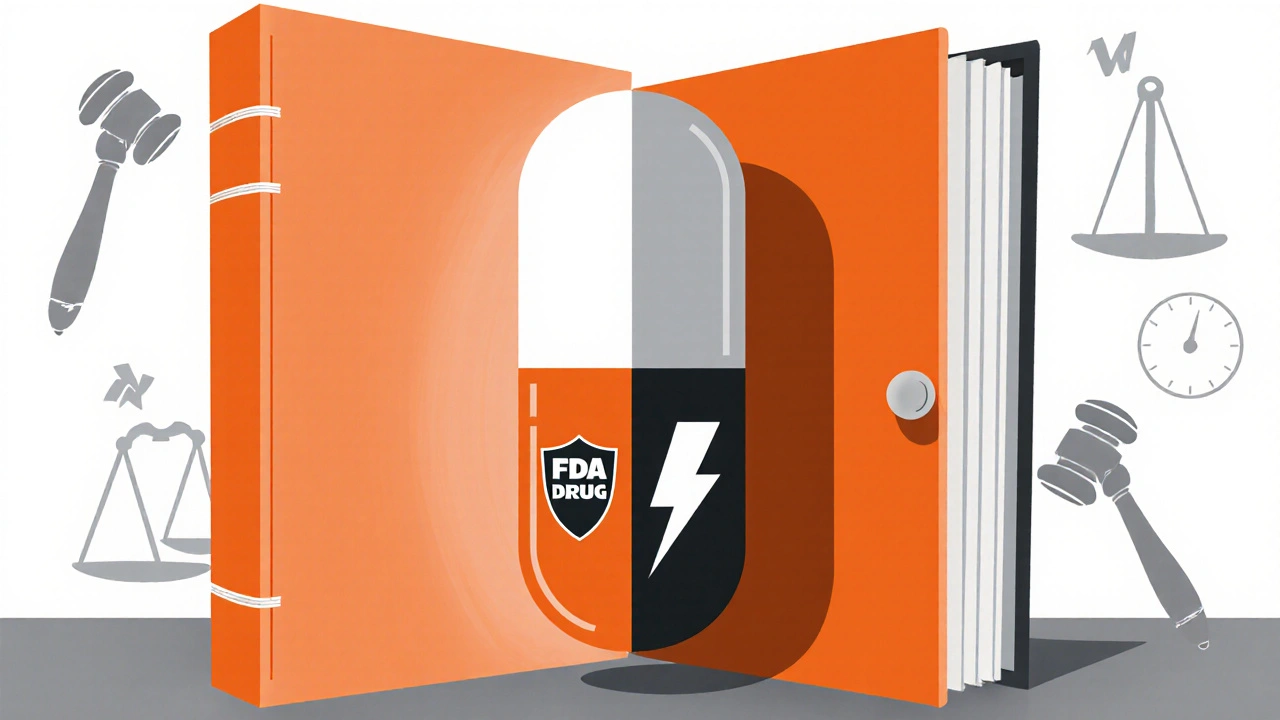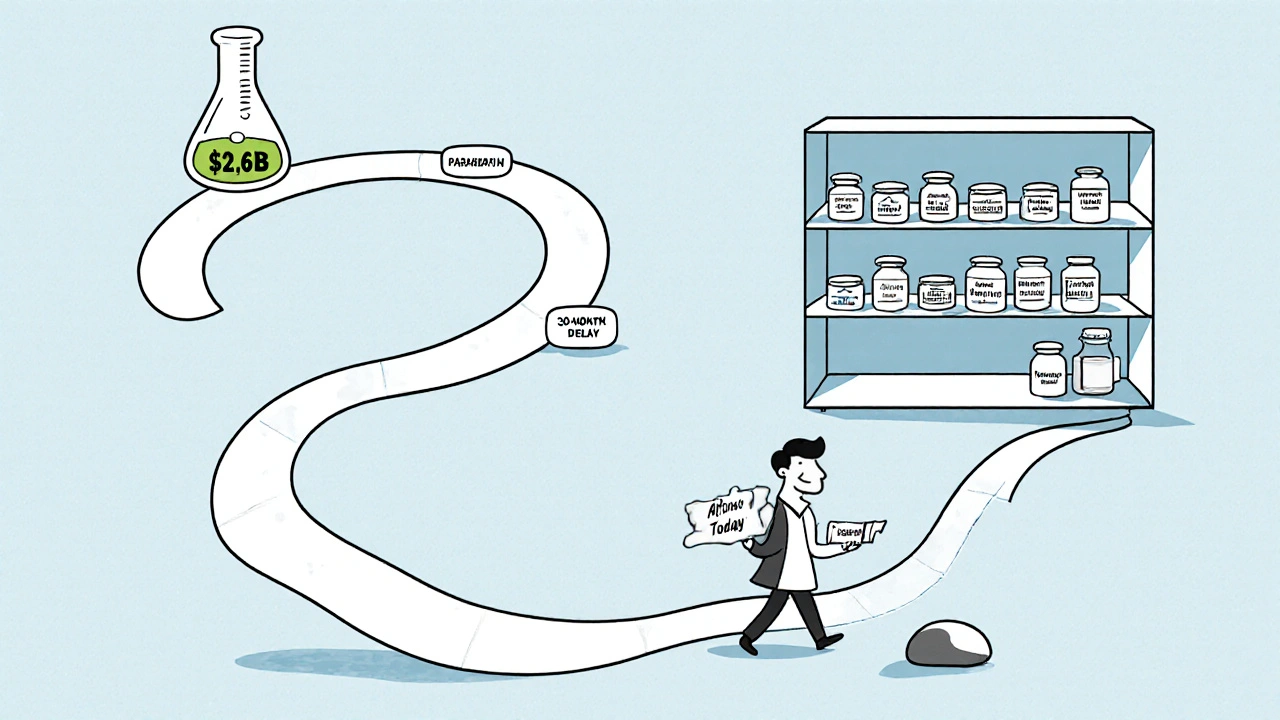When a pharmaceutical company spends over $2.6 billion to develop a new drug, it doesn’t just hope for success-it needs legal protection to survive. That’s where patent law comes in. Patents give drugmakers a 20-year monopoly from the date they file, but in reality, they rarely get the full term. By the time a drug clears FDA review, often 10 to 12 years have passed. That leaves maybe 8 to 10 years to make back the investment before generics enter the market. Without patents, no company would risk billions on a drug that could be copied the moment it hits shelves.
How Patents Create a Balance
Patents aren’t meant to lock away medicine forever. They’re designed to create a trade-off: reward innovation today so patients get better treatments tomorrow. The U.S. system, shaped heavily by the Hatch-Waxman Act of 1984, made this balance official. Before this law, brand-name drugmakers could delay generic versions indefinitely by filing lawsuits. Generic companies had no legal path to enter the market until after patents expired. The result? Patients waited years longer than necessary for affordable options.
The Hatch-Waxman Act changed that. It gave generic manufacturers a clear route to challenge patents before launching. At the same time, it gave innovators extra time-up to five years-to make up for delays caused by FDA reviews. This wasn’t just a legal tweak. It was a structural shift in how medicine gets to patients.
The Orange Book and the Paragraph IV Gamble
Every approved drug in the U.S. is listed in the FDA’s Orange Book, which includes all patents tied to that drug. Generic companies use this list like a map. If they want to launch early, they file what’s called a Paragraph IV certification. This is a legal notice saying: "We believe your patent is invalid or we don’t infringe it."
This triggers a bomb. The brand company has 45 days to sue. If they do, the FDA is forced to delay approval of the generic for up to 30 months-even if the patent is weak. That’s a huge advantage for the innovator. But it’s also a calculated risk. If the generic wins, they get 180 days of exclusive rights to be the first to sell their version. During that window, they can charge more than later entrants, often making back their legal costs in months.
That’s why so many generics take the risk. In 2023, 97% of new generic applications used this Paragraph IV route. The average time to resolve these lawsuits? 28.7 months. The system is slow, expensive, and complex-but it works.

Generics Don’t Just Lower Prices-They Save Lives
Once generics enter, prices drop fast. A branded drug might cost $500 a month. The first generic might drop to $150. By the time five generics are on the market, it’s often under $30. Prozac lost 70% of its U.S. market share when its patent expired in 2001. Eli Lilly lost $2.4 billion in annual sales overnight. But patients gained access to a drug they could actually afford.
Today, generic drugs make up 91% of all prescriptions in the U.S. But they account for only 24% of total drug spending. In 2022, they saved the healthcare system $373 billion. That’s not a number-it’s millions of people filling their prescriptions instead of skipping doses because they can’t pay.
Take ibuprofen. When Boots’ Brufen patent expired in the 1980s, Advil and Motrin flooded the market. Within years, a month’s supply cost less than a coffee. The medicine didn’t change. The science didn’t change. But the price did-and so did access.
When Innovation Gets Stuck: Evergreening and Patent Thickets
But the system isn’t perfect. Some companies use what’s called "evergreening"-filing new patents on tiny changes: a new pill shape, a different dosage schedule, a new coating. These aren’t breakthroughs. They’re legal tricks to delay generics. Humira, a top-selling biologic, accumulated 241 patents across 70 families. That delayed U.S. biosimilar competition until 2023-even though Europe had generics since 2018.
These practices are called "patent thicketing." They’re legal, but they’re not what patents were meant for. The European Commission has called them abuses of market power. In the U.S., the FTC has fought against "pay-for-delay" deals-where brand companies pay generics to stay off the market. These deals cost consumers $3.5 billion a year.
The 2022 CREATES Act tried to fix one piece of this: preventing brand companies from refusing to sell samples to generics, which they used to block testing. But the bigger problem-patent thickets and evergreening-remains largely unchecked.

What’s Next for Patents and Generics?
The legal landscape keeps shifting. In 2017, a court ruling in Amgen v. Sandoz threw the biologics patent process into chaos. The "patent dance," a carefully choreographed exchange of information between brand and generic makers, was weakened. No one’s fully fixed it yet.
Meanwhile, the Patent Trial and Appeal Board’s inter partes review (IPR) process-used by generics to challenge patents more cheaply-is under legal attack. Some argue it’s unconstitutional. Others say it’s the only tool keeping patent abuse in check.
Drug prices are still rising. In 2022, prescription spending hit $621 billion-22% of all U.S. healthcare costs. Congress is considering bills like the Preserve Access to Affordable Generics and Biosimilars Act to ban pay-for-delay deals. But progress is slow.
Still, the core of Hatch-Waxman holds. Generics still enter fast after patents expire. The 180-day exclusivity still drives competition. The Orange Book still gives transparency. And despite all the loopholes and legal battles, the system still delivers what it promised: innovation today, affordability tomorrow.
Why This Matters Beyond the Lab
This isn’t just about lawyers and patents. It’s about whether a diabetic can afford insulin. Whether a cancer patient can get their targeted therapy. Whether a parent can buy asthma inhalers without choosing between rent and medicine.
Patents protect innovation. But without generics, that protection becomes a barrier. The law didn’t create this tension by accident. It was designed to hold both sides in balance. Right now, the scale is tipping. The question isn’t whether patents matter. It’s whether we’re letting them serve the people they were meant to help.


Written by Felix Greendale
View all posts by: Felix Greendale